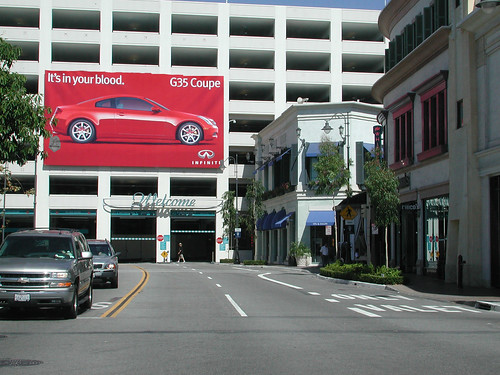even in a car-based city as los angeles there are still some places people use their feet to go around. the venice beach boardwalk, parts of downtown and the farmers' markets are among those. another place designed for walking is the grove l.a. but even here you are forcefully reminded you are in la, the capital of car country.
the grove is basically a shopping mall urban development as there are so many of in the united states and canada (and more and more in old europe). it has a nice, old imported look on its facades so people don't feel at home; remember, for a lot of americans going to one of those big-ass shopping centers, like the west edmonton mall or the mall of the americas, is like going to paris or london for a lot of europeans. it's a special thing to do, so you better have a good time when there.

and to be honest, they did give it a try. you have people walking around, a wide array of shops, restaurants and a very, very, very big movie theater. there is even a little tram driving around on a track. i would almost buy it as being the real, unfabricated world, if it wasn't for the way you enter the area: through a parking garage.

there is no apparent pedestrian entrance, the streets inside the complex run into dead walls and as you can see, there is no real designing in the parking garage structure (although the apparently endless repetition of beams and columns could propably inspire some latter-day structuralists...). it is this transition from parking to walking that makes the grove so undeniably hollywood-ian. everything is fake, just a facade. and just like the moment you walk out of a movie theatre and realize that it was all fake, the moment you leave the luscious and friendly environment of the grove, you realize you are in la: the car is waiting.
add:
a friend told me an interesting thing about universal's city walk. since we're in la, everything you see and every image is somewhat from another place from around the world. hollywood likes to mimick the planet. but in citywalk, la actually mimicks itself. you have a piece of downtown, venice, hollywood and even compton. but most of all, a lot of universal.
since i have forgotten to bring my camera there (twice already; bad architect!), the photos here are not my own. photo 1 is by binaryla, photo 2 is by supermod. you don't know it, but thanks. next time i'll bring my own camera.